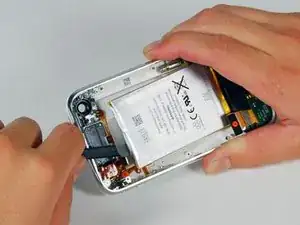
Battery
These are some common tools used to work on this device. You might not need every tool for every procedure.
The iPhone 3G was the first iPhone to include 3G web surfing capabilities.
In terms of repairability, the iPhone 3G is not too bad. The display assembly comes off pretty easily with a suction cup and some plastic opening tools. The front glass can be replaced separately from the rest of the display assembly, saving money when replacing a shattered front panel. Since the phone is built from back to front, the rear panel is the hardest to replace and requires completely dismantling the entire device.
You can identify the iPhone 3G by one of the following model numbers etched into the back case:
The iPhone 3G features a curved black plastic back with shiny apple logo. A SIM tray and power button are situated on the top side. Volume buttons and a ring/silent toggle are on the left side.
The 8 GB iPhone 3G is completely black (front and back) with silver side buttons, while the 16 GB version offers a choice of black or white front bezels.
Announce date: June 9, 2008
Model: A1241
Developer: Apple Inc.
Operating system: OS X 2.0 through iOS 4.2
Display:
Camera: 2.0 MP with geotagging
Processor: Apple-branded 412 MHz 32-bit Samsung ARM 11 with PowerVR MBX-Lite GPU
RAM: 128 MB eDRAM
Sensors: Accelerometer, ambient light, two proximity sensors
Storage: 8, or 16 GB Flash Memory
Wireless Connectivity:
Battery: 3.7 V, 1150 mAh lithium-ion polymer
Dimensions: 4.5 x 2.4 x 0.48 in (115.5 x 62.1 x 12.3 mm)
Weight: 133 g (4.7 oz)
Colors: Black (8 GB or 16 GB) or White (16 GB only)